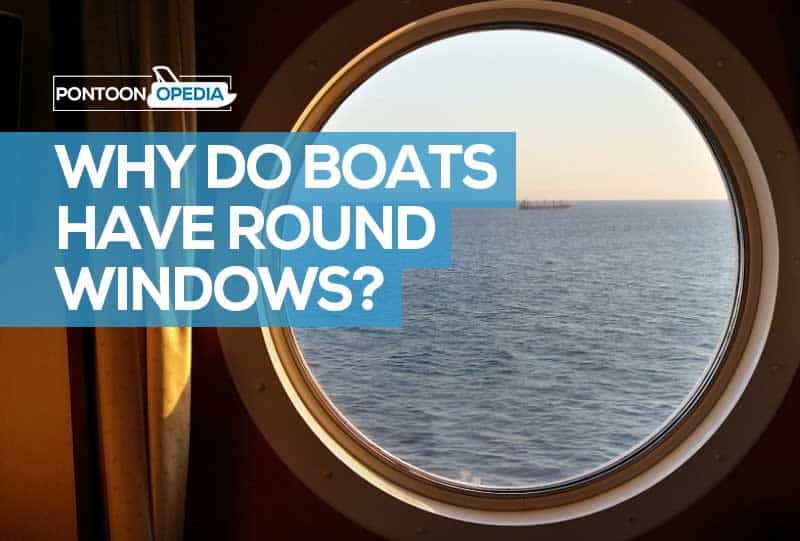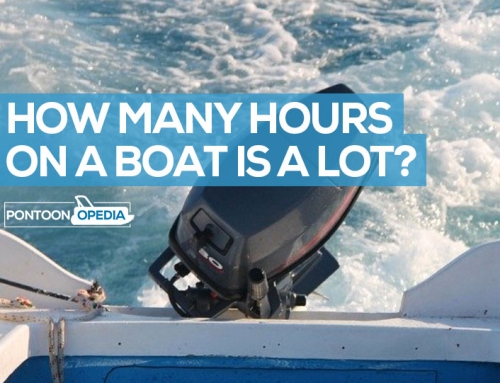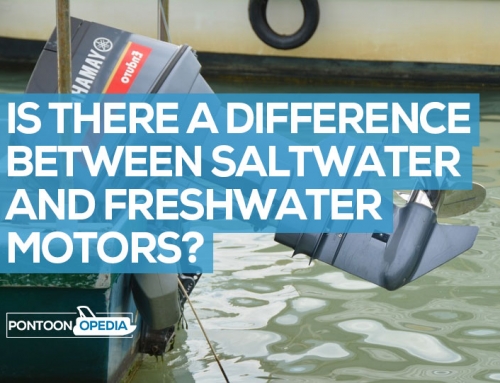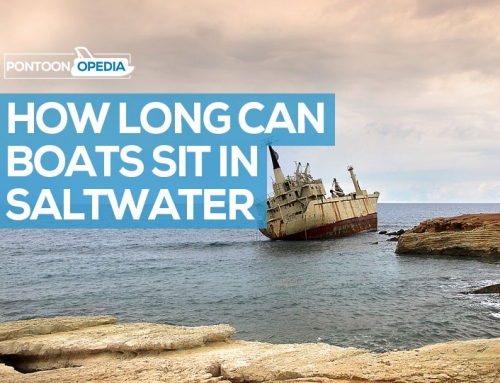We all know what classic boat windows look like. They are round and called portholes. But have you ever wondered why ship portholes are round? Believe it or not, there is actually a very good reason why ships have round windows. Let me explain.
Why do boats have round windows? Round windows (or portholes) are easier to seal than square windows and are stronger against wind and water. Circular designs offer strong support. Portholes are also round due to them being windows to poke old-fashioned cannon turrets through.
Why do boats have circular windows?
As you can see, there are two main reasons why boats have round windows. The cannon one is how it all started out in the olden days, but now windows remain round due to the strength of design it can offer for ships at sea.
Originally used as a way of securing cannons onto the side of Tudor warships, like all types of window, portholes are now more used to let in light and ventilation into lower-deck rooms.
Despite being over 500 years old, portholes are still commonly used today on many boats, ships and even houses.
But why do so many ships and boats still use them to this day? Read on for a more full and in-depth explainer on why boats have circular windows.
What are portholes?
A porthole is an iconic feature for both boats and general maritime vessels. Originally developed for larger ships in the Tudor period, nowadays they are used on many different sea craft, as well as houses, for both practical and aesthetic reasons.
Otherwise known as a ‘Bull’s-eye window’, as well as a side scuttle or side hole (which is how it is referred to in the International Convention for the Safety of Life at Sea and in the U.S. Code of Federal Regulations), portholes are iconic in their image.
Why are portholes called portholes?
Port holes were invented during the rein of Henry VII of England, developed by French shipbuilder James Baker as a way of securing large cannons to the forecastle and aft castle sections of the ship when they were too big for conventional methods of securing guns.
To do this, he pierced round sections into the hull of the ship, through which the ends of the cannons could be fitted to fire. When they were not in use, however, these holes were covered by doors, or ‘portes’ in French, which was then later corrupted into the name ‘porthole’.
However, guns aren’t the only reason that portholes are round. In fact, that has a lot to do with stress concentration.
Round windows on ships are stronger
Ships and sea-fairing vessels go through a lot, from rough waters to the general tossing and turning of the ship. Normal, square windows suffer from weak points, especially at their corners, allowing for breaking or letting in leaks.
However, round windows distribute the stress and strain on the frame as it has no corners to suffer weakness. This is why airplane windows have rounded edges, because of the increased pressure on the outside of the craft.
Like all windows, portholes also let in light, allowing people below deck to work for longer without needing lights, and also bring in ventilation during calm weather.
I found this explanation on Quora which I think explains very well why ships have round windows:
“Ships on the open sea can be subjected to waves that are sometimes higher than 18 meters. When those waves hit a window, it can be more force than a hurricane. The round window design can withstand forces far better than a square design could, where structural weakness could be an issue.”
What are the benefits of a porthole?
If you have a ship or boat and are considering getting some new windows, then getting a porthole offers way more than just a classic maritime aesthetic.
Portholes are hinged at one side, allowing them to be opened during calm weather to allow ventilation into below-deck quarters. When closed, they are designed to be both watertight and weatherproof, meaning that even during the roughest conditions out at sea, no water will be able to get through to the inside of the ship.
Generally about 2-feet in diameter, portholes can weigh up to 100 pounds, which also provides a sturdiness to the window.
They are incredibly durable and can be made from a variety of different metals, including steel, aluminium, brass, bronze and iron.
However, if you are looking for a long-term, hardwearing porthole not just for ornamental appearance, bronze and brass as best recommended as aluminium and steel windows have a tendency to rust and warp after prolonged exposure to sea water.
Should I get a porthole for my boat?
If you have a boat that you are interested in getting a porthole for, there are many different options available to you; all of which often depend on the type of boat you have, what you want to use the porthole for and where on your boat you want to put it.
Modern, practical portholes typically come in three different styles: The classic circular portholes, more ornate oval portholes and rounded-edged rectangular portholes. The choice for what kind of porthole you get for your porthole usually depends on the look you are going for, although certain makes and designs of portholes are better suited for installation on certain areas on the ship, such as the hull, deck or the coach roof.
While many choose to have portholes installed on yachts or catamarans, portholes can also be useful additions on narrowboats, especially in terms of safety.
Instead of larger windows, which can allow people to climb into your boat if you leave it open, portholes are too small to allow this, meaning that you can feel safer ventilating your boat while it is in dock without worry of any passers by getting inside.
Can I get a porthole for my house?
Because of the recent fashion in utility-chic, especially in terms of interior decorating, portholes and other maritime features usually seen on boats are becoming very popular in homes, restaurants and other public or commercial places.
The cost of porthole windows can range from $30 to over $300, depending on what you want to use it for and whether or not it is brand new, reclaimed or salvaged.
If you are simply looking for a piece of interior décor rather than a fully functioning window, then there are a lot of new and antique portholes for sale online that you can easily hang inside your home for a very affordable price, including Benjara’s Glass Inserted Aluminium Porthole or RedSkyTrader’s Nautical Décor Porthole Window.
You can even get reclaimed portholes transformed into a mirror, for a nautical themed addition to your bathroom or bedroom.
However, if you are looking for a more unique window for your property and want a fully functioning porthole installed, then there are different options available to you in terms of installation.
You can easily buy a brand new or recommissioned porthole from many different reclaiming and salvaging websites, some of which can be installed as windows for your property.
These websites can also offer professional advice if you are unsure how to install your new porthole once you have got it home.
Cruise ship rooms with portholes
Not all cruise ship rooms have windows, with these ‘ocean view’ rooms often cost a lot more than a standard interior cabin located further inside the ship.
However, cruise ship ‘porthole cabins’ can be a less expensive option that still provides an outwards-facing view that allows you to see the sea, as long as you are okay with a room on the lower decks of the ship.
Some cruise ships specify ‘porthole cabins’ as a type of room, and are generally featured on the lower decks, closer to the water.
While the portholes don’t give as wide a view as rooms with larger, more modern windows, and doesn’t come with a balcony or veranda; if you are looking for a more classic experience, then getting a porthole cabin can be a rather exciting experience.
If you want a great view whilst on a cruise, check out these articles:
- Which is the best side of a cruise ship to be on?
- Where to stay on a cruise ship so you don’t get seasick
The last word…
I hope this has now answered your question. The next time someone asks you why do boats have round windows, you can now give them a confident response.






